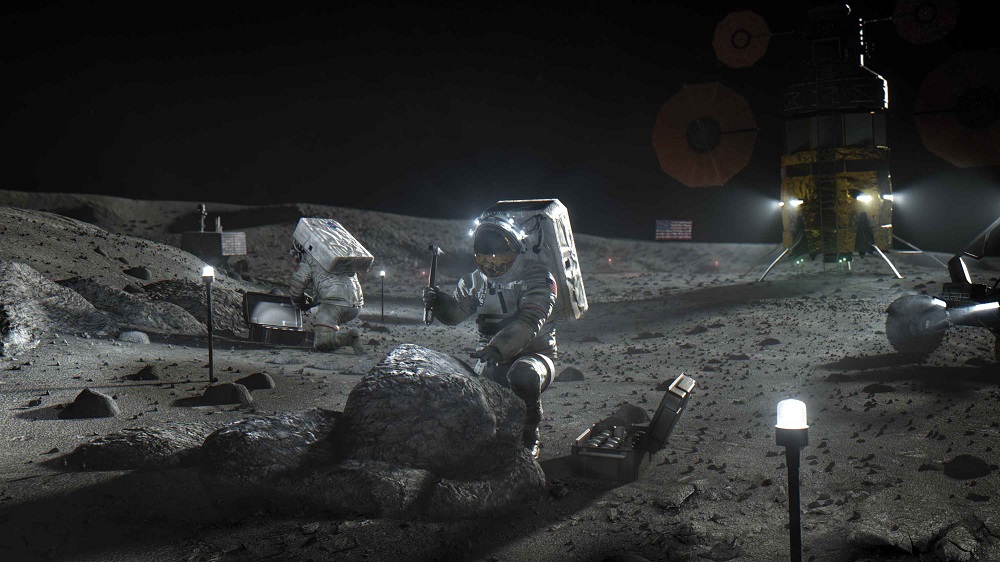WASHINGTON — The Senate is moving forward with a revised version of a NASA authorization bill that formally authorizes the agency’s Artemis lunar exploration effort and extends operations of the International Space Station.
The Senate Commerce Committee released July 20 the text of the Creating Helpful Incentives to Produce Semiconductors (CHIPS) Act, a bill primarily intended to support domestic manufacturing of semiconductors. The release came a day after the Senate voted 64–34 in favor of a procedural motion to advance the legislation.
The CHIPS Act emerged from conference negotiations between a Senate bill, the United States Innovation and Competition Act, and a House counterpart, the America Creating Opportunities for Manufacturing, Pre-Eminence in Technology and Economic Strength (COMPETES) Act. The Senate bill included a NASA authorization act, while the House version did not.
The CHIPS Act does include a NASA authorization, although one that does not authorize specific funding levels for the agency. Instead, the version in the new bill focuses on policy issues in exploration, science and other parts of the agency.
The bill directs NASA to establish a “Moon to Mars Program Office” within the Exploration Systems Development Mission Directorate. It would oversee what it calls the Moon to Mars Program, which includes the agency’s Artemis campaign of lunar exploration missions and eventual human missions to Mars. The office would be led by a director responsible for the overall Artemis effort, reporting to the associate administrator for exploration systems development.
That program would include the familiar elements of Artemis, including the Space Launch System, Orion, Exploration Ground Systems, the lunar Gateway, the Human Landing System, spacesuits and other elements needed to achieve its goals.
The bill directs NASA to launch the SLS annually after the first successful crewed launch of Orion, which would be the Artemis 2 mission no earlier than 2024, going to two missions a year “to the extent practicable” after the first crewed lunar landing. NASA’s plans currently call for no more than one SLS/Orion mission a year through the end of the decade, with none in some years.
NASA would be required to have the Block 1B version of SLS, with the larger Exploration Upper Stage, ready by the Artemis 4 mission in 2027. It also directs NASA to provide a report on the status of the Mobile Launcher 2, whose development has suffered massive cost and schedule overruns.
The bill offers little direction on the Human Landing System, beyond requiring at least one uncrewed test flight, an approach NASA was already following. By comparison, the earlier Senate bill directed NASA to select a second lander — a course NASA is now taking — and authorized $10 billion for the overall HLS program.
The bill extends NASA’s authorization to operate the ISS from September 2024 to September 2030, something Congress has attempted to do several times in recent years in other bills that were not enacted. It calls for a report on the technical feasibility of the extension and another report on commercial spaceflight participants to the ISS “to ensure government astronaut safety, to avoid interference in ISS operations and research priorities, and to prevent undue demands on crew time and resources.”
In science, the bill endorses the concept of a new generation of “Great Observatories” in astrophysics backed in the Astro2020 decadal survey, calling on NASA to “pursue an ambitious astrophysics program that meets the scientific vision of the astronomical community and the transformative capacity of technological innovation.” However, the bill cautions that NASA should incorporate lessons in cost and schedule management from past missions.
The bill formally creates the Planetary Defense Coordination Office that NASA already has within its planetary science division. It directs NASA to proceed with a space telescope mission to search for near Earth objects, called NEO Surveyor, and “should not delay the development and launch of the mission due to cost growth on other planetary science missions.” NASA’s fiscal year 2023 budget proposal sought to delay development of NEO Surveyor by two years to cover the increasing cost of other programs.
The technology section of the bill backs continued development of space nuclear power and propulsion systems, “including in cargo missions to Mars in the late 2020’s and crewed missions to Mars in the 2030’s.” NASA has not announced any plans for cargo missions to Mars in the latter part of this decade.
The bill directs NASA to establish an Independent Program Analysis and Evaluation Office to perform cost and technical assessments of agency programs and carry out strategic planning activities. NASA created last year an Office of Technology, Policy, and Strategy to perform similar work. The bill calls on the office to maintain an “ongoing, focused effort” reviewing NASA’s exploration programs as well as a stand-alone report on the cost of operating the ISS through 2030.
Other parts of the bill include language for other science and technology agencies, such as the National Science Foundation (NSF). One section directs the NSF to support research on mitigating the effect of satellite constellations on astronomy. Another section calls on the NSF to facilitate access for researchers it funds to platforms for microgravity research, including those run by the private sector as well as NASA.
While the Senate Commerce Committee published the CHIPS Act, it has the support of the chair of the House Science Committee. “In this bill we are putting forth strong initiatives” at several agencies, including NASA, said Rep. Eddie Bernice Johnson (D-Texas) in a statement. “Of course, after months of negotiating between the House and the Senate on an innovation package, compromises had to be made. And not everyone is going to get all that they originally wanted — including me. But that is the nature of compromise.”
